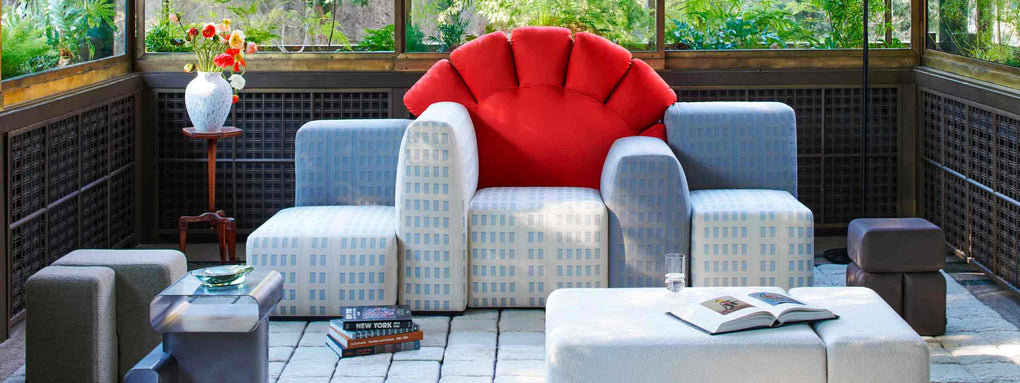Denis Santachiara interviewed by Cristina Morozzi
Innovative designer and artist, one of the undisputed protagonists of Italian design and a pioneer of digital manufacturing. Read the interview with Denis Santachiara.
C.M.
Tell us how you started out.
D.S.
I started out drawing cars as a kid because cars were legendary for me, and I also painted. I grew up in “motor valley” in the Emilia Romagna region of Italy, an area full of small manufacturers of customised supercars. By pure chance, I came across MVM, a supercar startup, showed them my drawings, and they hired me. I started working on a Nembo, a sports car created for special customers, and this was where I gained experience. Two of them were also sold to the MoMA in New York.
Final car designs were always individual drawings, and back in the day drawings were done with drafting machines that were up to 5 metres long. After 1968, the age of underground culture and the beat generation, I began to focus on the world of art and began going to galleries. In 1975/76, I attended the Venice Biennale after being invited by Gianfranco Bettetini, who today is considered the father of semiotics. I exhibited with “Collina soffice” (Soft Hill), which was created with the Apple2 together with Iret, the first Italian importer of Apple. Lisa Licitra Ponti, art columnist for magazine Domus, dedicated four pages to the project, and the event, entitled “Tutte le arti tendono alla performance” was held at four other locations, thanks to the curatorship of Francesca Alinovi, professor of art with the Department of Arts, Music and Theatre at the University of Bologna.
C.M.
Tell us about your approach to design
D.S.
I arrived in Milan and opened a design studio. I became involved with Alchimia, a radical avant-garde group founded by Alessandro Guerriero and his sister Adriana in 1976, which Alessandro Mendini, Ettore Sottsass, Andrea Branzi and Riccardo Dalisi were part of. I began to create objects called “Funzionoidi” with the idea that objects are worthwhile not only for their aesthetics but also for their performance. Technology for me has the meaning of the Greek “tekne”, or poesis, which literally means making something from nothing, i.e. creating. My experience with “Funzionoidi” led to the exhibition “Neomerce – Design dell’invenzione e dell’estasi artificiale” at the Triennale di Milano in 1984 and in 1985 at the Centre Pompidou in Paris with projects by young designers at the time, including Philippe Starck, Alberto Meda, Franco Raggi, and Danny Lane. The exhibition displayed objects that had to be functional.
C.M.
Who do you consider to have been your teacher?
D.S.
Bruno Munari. I came across one of his books in the local library and he won me over! I wrote to him and he invited me to his studio in Milan. I showed him a project which he liked because he saw it was innovative and original. I was struck by his ability to listen, his intelligence, and his accessibility. He was a teacher of humanity.
C.M.
Do you have a favourite type of project?
D.S.
I don't particularly like furniture, I prefer more lateral objects. I’m fascinated with lamps and LED lights.
C.M.
What about technology?
D.S.
I see technology not as a performance but as a language that doesn’t concern the physical structure of objects but rather their sensory aspects. It’s related to perception rather than form and function, like Mies Van der Rohe says with his concept of ‘form follows function’.
C.M.
Can design be considered a mission?
D.S.
I don’t think that design can change the world, but there’s this phrase that many use: “design is like chilli pepper in tomato sauce”. Meaning there has to be a strong desire to experiment and invent in order to make products appealing.
C.M.
What do you see as being the future of design?
D.S.
Today, there’s a parallel maker market that competes with classic furniture companies, and we have to be aware of this and take action. I think there’s a lot of work and experimentation to be done in terms of digital communication, representation, and online sales.
Denis Santachiara is also the mind behind Cyrcus Design. Discover the collection on Design Italy.
Cristina Morozzi





